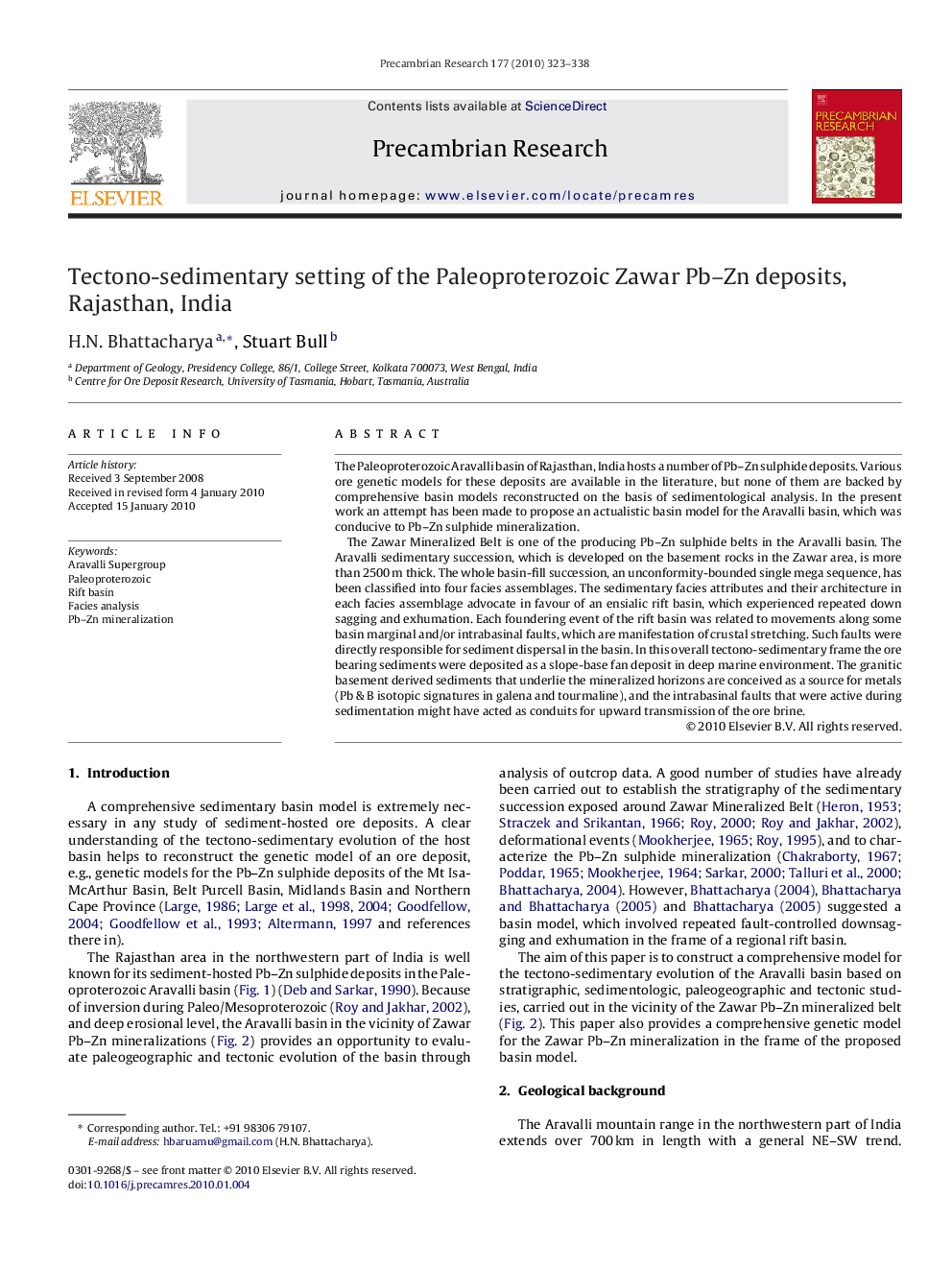| Article ID | Journal | Published Year | Pages | File Type |
|---|---|---|---|---|
| 4724067 | Precambrian Research | 2010 | 16 Pages |
The Paleoproterozoic Aravalli basin of Rajasthan, India hosts a number of Pb–Zn sulphide deposits. Various ore genetic models for these deposits are available in the literature, but none of them are backed by comprehensive basin models reconstructed on the basis of sedimentological analysis. In the present work an attempt has been made to propose an actualistic basin model for the Aravalli basin, which was conducive to Pb–Zn sulphide mineralization.The Zawar Mineralized Belt is one of the producing Pb–Zn sulphide belts in the Aravalli basin. The Aravalli sedimentary succession, which is developed on the basement rocks in the Zawar area, is more than 2500 m thick. The whole basin-fill succession, an unconformity-bounded single mega sequence, has been classified into four facies assemblages. The sedimentary facies attributes and their architecture in each facies assemblage advocate in favour of an ensialic rift basin, which experienced repeated down sagging and exhumation. Each foundering event of the rift basin was related to movements along some basin marginal and/or intrabasinal faults, which are manifestation of crustal stretching. Such faults were directly responsible for sediment dispersal in the basin. In this overall tectono-sedimentary frame the ore bearing sediments were deposited as a slope-base fan deposit in deep marine environment. The granitic basement derived sediments that underlie the mineralized horizons are conceived as a source for metals (Pb & B isotopic signatures in galena and tourmaline), and the intrabasinal faults that were active during sedimentation might have acted as conduits for upward transmission of the ore brine.
